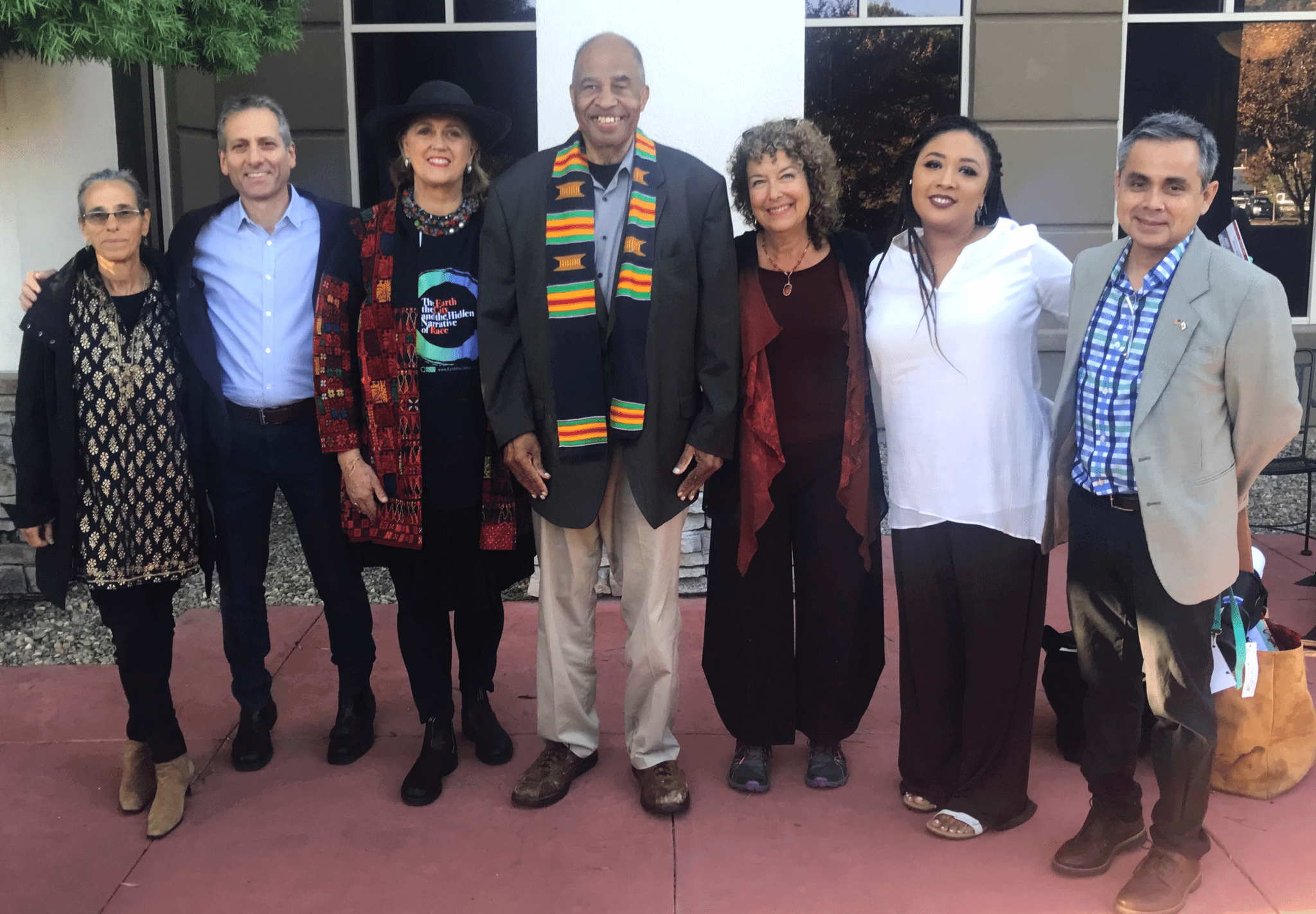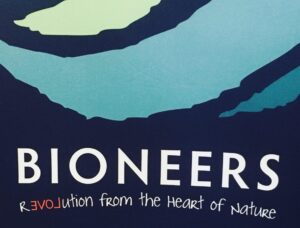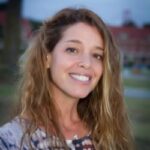Western societies will, in the end, be subservient to the land and what it can provide and teach. . .we will never know ourselves until we know where we are on this land. ~Paul Hawken
I was travelling, was halfway across the country when the Tubbs fire started in Northern California. The most destructive wildfire in California history, they say. Preceded by Hurricane Maria. Preceded by the Central Mexico Earthquake. Preceded by Hurricane Irma. This describes only this part of the globe. This describes only a one-month timeframe. This does not describe the devastating impact to landscapes that were levelled. This does not describe the people who lost their lives, nor those who survived and are currently struggling to continue doing so. In Puerto Rico alone there are 3.4 million American citizens in the midst of a humanitarian disaster, they say.
Apocalyptic is used by people on the ground, in all instances, to describe the places they had previously referred to as Home.
“At the end of the 1960s there was a huge backlash to the civil rights movement, and in that backlash the modern environmental movement emerged. Many of the white people who were involved were looking for ways to have some distance from the experience of the civil rights movement. It’s been more than 45 years, and the reintegration of the issues of the environment, and the issues of social and racial justice have been taking on a fierce new form. It’s one of the reasons that we have, now, the business of emerging social and racial justice movements coming together with environmental justice.” ~Carl Anthony
I returned to the place I call home to be present at the 2017 Bioneers Conference. This year Ten Strands, in collaboration with State Superintendent Tom Torlakson’s Environmental Literacy Steering Committee (ELSC), was invited to submit a session proposal. This is how we chose to show up in this space, described by Paul Hawken as, “central to the re-imagination of what it means to be human”:
ENVIRONMENTAL LITERACY FOR ALL: The benefits of environmental and outdoor science education have been widely known for decades, but the cultural relevance of these experiences and access to them remains elusive for low-income communities, communities of color, and English language learners. This session introduces environmental literacy as an inclusive, relevant strategy within the K–12 public education system to help students learn to solve problems, improve their lives and communities, and make the world a better place. We will explore success stories and the possibility of bringing environmental literacy efforts to scale by cultivating community partnerships, meeting mainstream educational goals, and providing students with the capacity to act individually and with others to build ecologically sound, economically prosperous, and equitable communities for present and future generations.
Our panel discussion was moderated by ELSC Co-chair Craig Strang, Associate Director of the Lawrence Hall of Science, and included:
- Carl Anthony (ELSC Member, Urban Habitat, Breakthrough Communities Project, Earth Island Institute, architect; oft referred to as Grandfather of the Environmental Justice movement);
- Paloma Pavel, PhD (ELSC Member, President Earth House Center, Co-founder Breakthrough Communities Project);
- Raquel Pinderhughes, PhD (Professor and Chair of Urban Studies and Planning Department at San Francisco State University, creator of the Roots of Success Curriculum);
- Jose Flores (ELSC Member, Presidential Award-winning Brawley Union High School District teacher and committed student advocate); and
- Juanita Chan (District Science Lead, Rialto Unified School District and passionate champion of student-centered learning).
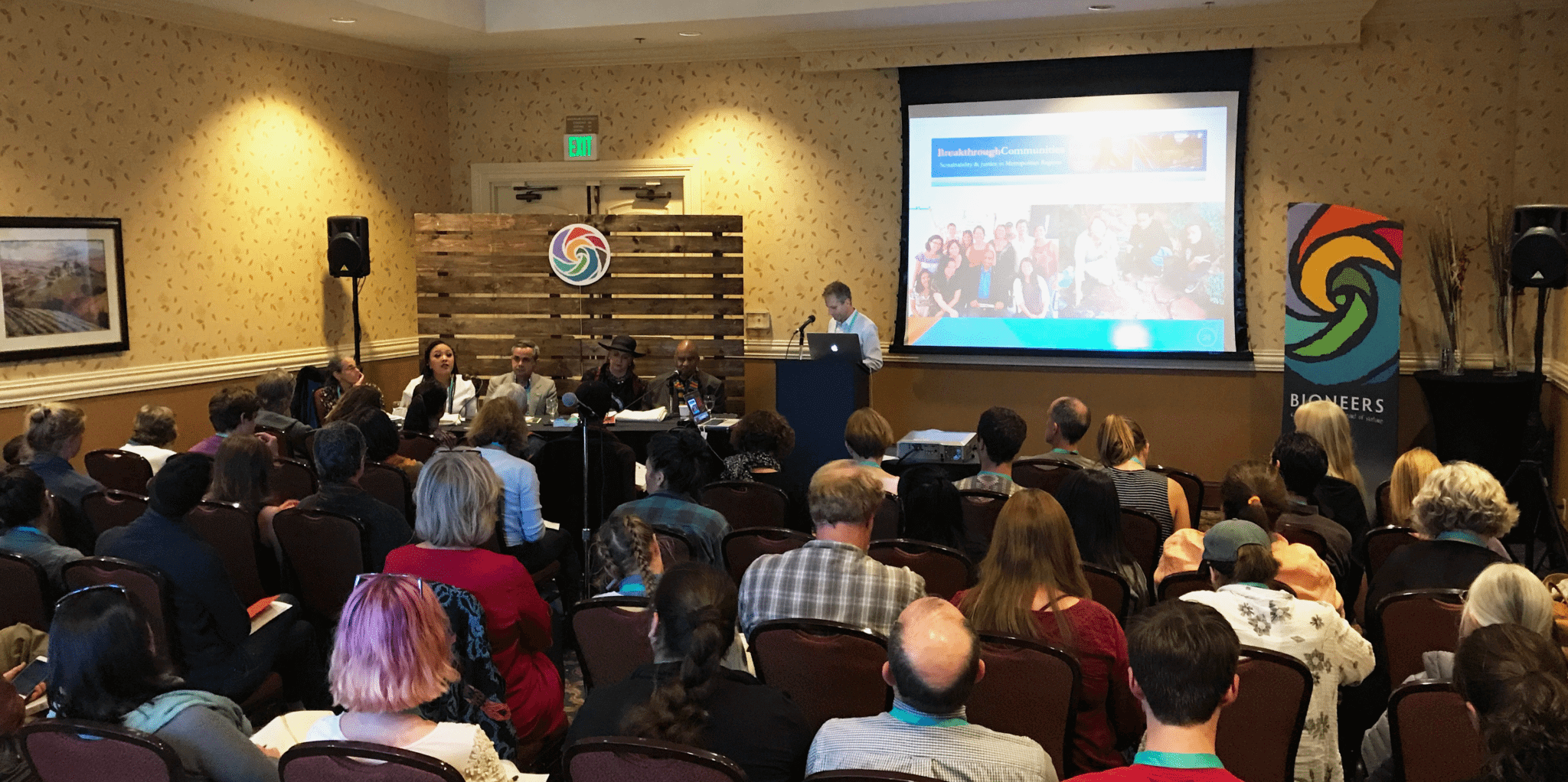
Saturday morning’s keynote speakers included Bioneers Co-founders Nina Simons and Kenny Ausubel, Amy Goodman (Democracy Now!), and Heather McGhee (President of public policy organization Demos). In addition to her work with Demos, Ms. McGhee helped shape key provisions of the Dodd-Frank Wall Street Reform and Consumer Protection Act. It was her talk, A New “We the People” for a Sustainable Future, that expressed so clearly and impactfully the issues that are—especially in rooms where economic and racial privilege (and all that word carries with it) are predominant—often avoided, sidelined, or otherwise left inadequately addressed.

“Our challenge today is to find the language that can link cultural diversity to a broad social movement that reflects the majority of the population in California—60% of whom are people of color. This is the challenge we all face as we pass the torch to the next generation who set out on this journey of making history for all of us.” ~Carl Anthony
This is a good time to pause and acknowledge the importance of language. There are words, words, and more words; they form and transform as we attempt to communicate, to reach common understanding with those with whom we hope to connect. Or influence. Or control. Ms. McGhee uses the term “hierarchy of human value” to speak about a deep truth about this country of ours, whose ascent to dominance would have been impossible without one particular group of people devaluing several others, from its inception all the way up to the present day. So when we, Ten Strands and the ELSC, speak of community, it is as students of the communities we seek to accompany.
“Accompaniment” is actually an umbrella term that includes a family of related practices: equality, listening, seeking consensus, and exemplary action. ~Staughton Lynd
Accompanying requires us to distinguish between frontline communities and impacted communities; to understand how referring to particular communities as ‘underserved’ or ‘vulnerable’ may be perceived as failing to recognize the power of people taking action within communities while perpetuating the language and intent of colonialism. It requires us, if we are outsiders, to listen carefully to what people with direct experience are saying, to respect how and when they want outside support, and to be sincere and consistent while doing so.
The Steering Committee’s work is organized around school districts as ‘units of change’, as a school district is one type of community. Teachers, students, school administrators, parents, governing boards, local businesses, and community-based organizations function together in a place, their place, in an effort to meet the social contract of free public high-quality education for our country’s youth. This is achieved to varying degrees, for a variety of reasons. Ms. McGhee effectively addresses the progressive retreat from public support, and traces it to the ways in which the word public has become a thinly-veiled trope for not-white:
Beginning in the 1970s, conservatives deployed a highly racialized strategy that relentlessly linked public institutions to undeserving minorities in order to undo the country’s social contract—one grounded in good government, strong unions, and regulated capitalism. In the New Deal and Great Society years, white majorities broadly supported activist government because they perceived it as helping people like themselves—hardworking, deserving, decent. But as government programs became available to people of color, conservatives saw that they could gain ground by dog whistling about welfare and criminals, using racially coded terms to invoke the specter of liberal government coddling people of color—the very groups whose fortunes seemed to be rising just as life was getting harder for the white working class in the 1970s. ~Ian Haney López & Heather McGhee
The nation’s public school system has felt the impact of this withdrawal, but State Superintendent Torlakson, himself a former classroom teacher, has convened a number of special task forces (including one that the ELSC evolved from) in an effort to fulfill the promise of quality public education for California’s 6 million K–12 students. Besides the Blueprint for Environmental Literacy, there also exists Revitalizing K–12 Civic Learning in California: A Blueprint for Action. Taken together in a larger context, they represent a necessary paradigm shift in public education in California. As funding for the state’s school districts moves to local control, districts are increasingly empowered to make decisions about how to provide the best education for their students locally, in and with their communities. Superintendent Torlakson’s Blueprints highlight practices that include integrated learning, hands-on learning, service learning, learning beyond school walls, community partnerships, and equity of access for all students to a variety of educational experiences:
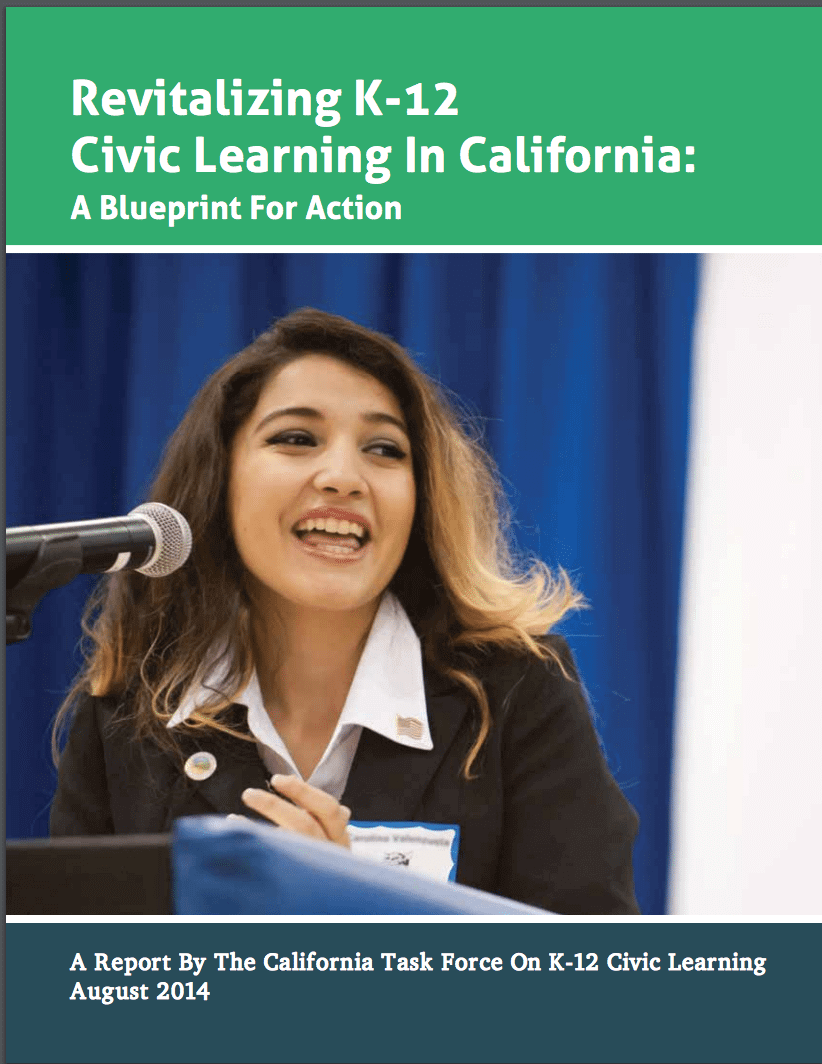 For all students in California to have access to a continuum of civic learning experiences starting in kindergarten—and to effectively respond to equity issues—we must embed robust civic learning throughout the K–12 experience, both within and beyond school walls. To this end, the Task Force makes the following system-wide recommendations to improve civic learning in every district, in every school, for every child. ~Revitalizing K–12 Civic Learning in California: A Blueprint for Action
For all students in California to have access to a continuum of civic learning experiences starting in kindergarten—and to effectively respond to equity issues—we must embed robust civic learning throughout the K–12 experience, both within and beyond school walls. To this end, the Task Force makes the following system-wide recommendations to improve civic learning in every district, in every school, for every child. ~Revitalizing K–12 Civic Learning in California: A Blueprint for Action
 We must invest our very best thinking, our very best efforts, and—above all—our very best people in improving the quality and reach of student education for environmental literacy in California. We must do so for the future of our students and for California’s prosperity, equity, and resource sustainability…The central approach for achieving environmental literacy proposed by the Blueprint for Environmental Literacy is to integrate environmental literacy efforts into California’s increasingly coherent and aligned K–12 education landscape so that all teachers are given the opportunity to use the environment as context for teaching their core subjects. ~A Blueprint For Environmental Literacy: Educating Every California Student In, About, and For the Environment
We must invest our very best thinking, our very best efforts, and—above all—our very best people in improving the quality and reach of student education for environmental literacy in California. We must do so for the future of our students and for California’s prosperity, equity, and resource sustainability…The central approach for achieving environmental literacy proposed by the Blueprint for Environmental Literacy is to integrate environmental literacy efforts into California’s increasingly coherent and aligned K–12 education landscape so that all teachers are given the opportunity to use the environment as context for teaching their core subjects. ~A Blueprint For Environmental Literacy: Educating Every California Student In, About, and For the Environment
Two of our Bioneers panelists live and breathe the intent and implementation of the recommendations expressed above, on-the-ground, every day.
Jose Flores is a civics teacher, and powerful advocate for his students at Brawley Union High School, his alma mater (read more here). Collaborating with school administrators, the school district board of directors, EPA Region 9, state and local governing bodies, and the community-based nonprofit Comite Civico del Valle, Mr. Flores’ students participate in a variety of experiences, both in school and out, tailored to be relevant, engaging, and enriching. The goal is to empower student voices, encourage civic participation, and expand awareness, access, and opportunity:
“You have to have a voice. For the most part, our students are from ethnic groups that withdraw from democracy because they don’t see themselves as having a voice. I have 180 students; 90% of them attend all school board meetings and all city council meetings. They have a voice. They have buy-in. Having a voice, and going to these meetings, they can push back on issues of the economy, which in our area directly tie into environmental issues. The focus that we emphasize is college, career, and civic readiness. We need students and teachers to understand that you truly don’t civically engage unless you’re environmentally literate. And you’re not truly environmentally literate unless you’re civically engaged—it works both ways. ”

Juanita Chan is a former classroom teacher, now the District Science Lead at Rialto Unified. There, she has inspired a core group of over 50 teachers dedicated to illustrating that science and the environment can provide the real-world context that gives flavor to all other subjects. She has worked vigorously to infuse environmental education into all levels of K–12 curriculum, advocating for access to experiential learning for all Rialto students. Her passion and vibrance is palpable—the people on both sides of me lean forward in their seats, returning her enthusiasm via eye-contact and nods of agreement whenever she speaks. The model for success Ms. Chan shares finds its foundation in the Next Generation Science Standards (NGSS). From there, valuing local context and the community’s unique perspective and skills fosters a culture of cooperation to create opportunities for students. The district prioritizes and supports teacher professional learning to integrate science and environment, and collaboratively strategizes with community stakeholders around identifying Local Control Accountability Plan (LCAP) goals and pathways to achieve them. Ms. Chan highlights the importance of responsiveness, flexibility, and ensuring that the focus remains on serving students:
“We have educational reforms in place, primarily the NGSS, and so we are using the NGSS to have these really tough conversations with our teachers—and not just our teachers but our administrators and our councillors as well—about social justice. About what is the intention of school. And if the intention of school is to really, truly serve all standards for all students then does our system set it up for every student to have that success? And if it doesn’t then we need to fix it.”
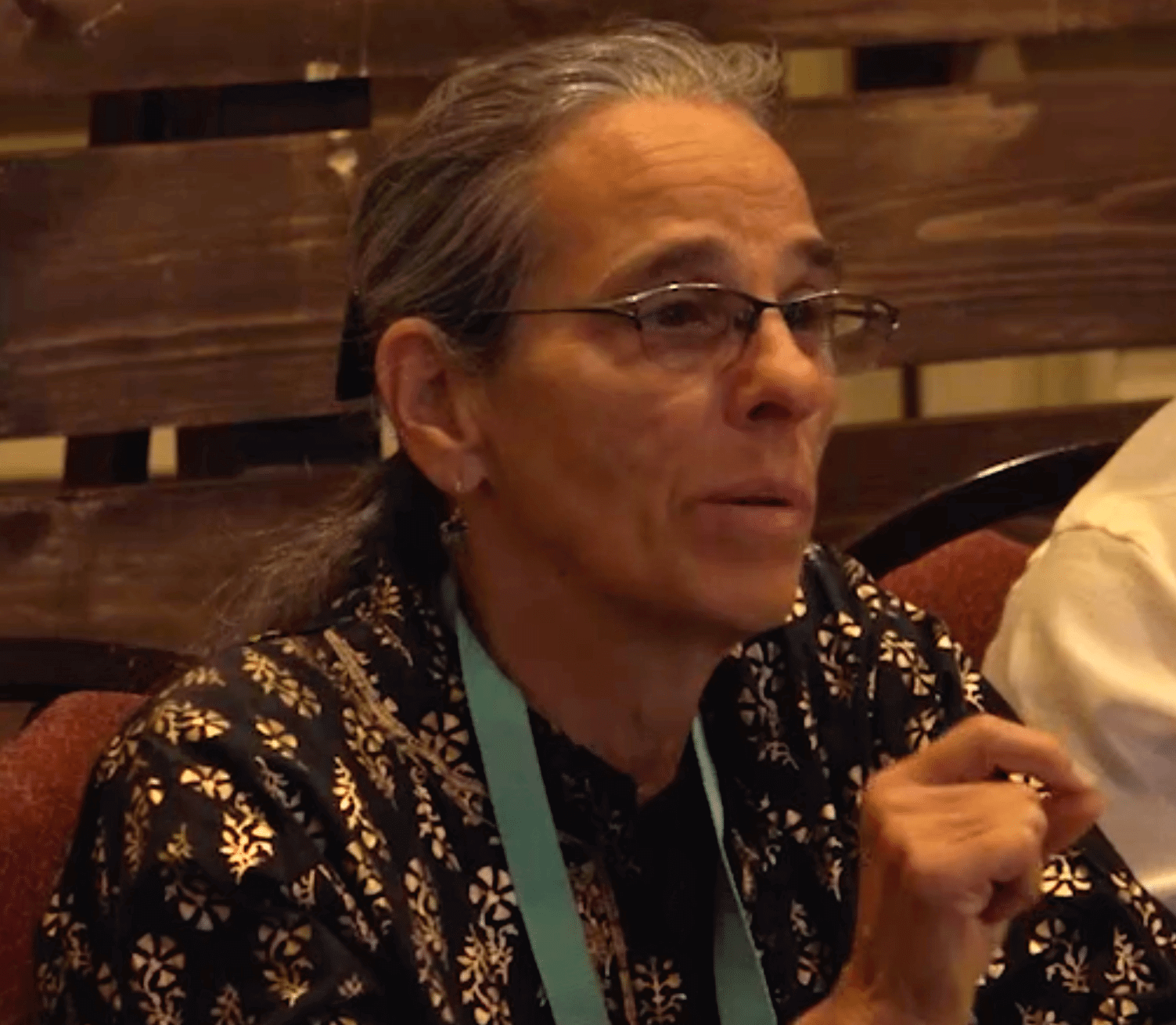
“All our students, to a person, are curious critical thinkers…but most have not completed high school. They are typically at 4th grade math, 7th grade reading [levels]. Many of our students are illiterate—even students that have a high school degree—and most of them have pretty negative associations with traditional schools and classrooms.” ~Raquel Pinderhughes
Dr. Raquel Rivera Pinderhughes has taught at San Francisco State University for the past 25 years, where she serves as Professor and Chair of Urban Studies & Planning. An activist scholar, her work focuses on improving quality of life and economic empowerment opportunities for low-income people and inner-city communities. She has directed urban and environmental education programs for incarcerated youth and adults, and developed green job training for low-income youth and adults throughout the country. In other words, Dr. Pinderhughes serves those who are direct evidence that a hierarchy of human value is still very much functioning in our society, and by default, our educational system. In other words, disproportionately people of color.
Her curriculum, Roots of Success, is used in 36 states and three countries, in sectors that run the gamut from universities, government, and nonprofit organizations to prisons and reentry programs. During the panel discussion, she informs us that the youth her programs serve are already experts on environmental issues. That folks from low-income communities are facing environmental problems and injustices every day, and know more than anybody sitting in this room. That it is the people with lived experience that are best equipped to name the most urgent problems and identify solutions. And that we are accountable to those who have been left out, left behind, let down. At some point while she’s speaking I notice I’m crying; I’m pretty certain it started between her first and second sentences.
“Our teachers provide students with material that is directly relevant to their lived experience, so that we front-and-center the experiences of low-income communities, communities of color, frontline, and fenceline communities. We get students excited about learning and about being in the classroom. We also strengthen academic skills, help people acquire new knowledge and skills, provide them with opportunities to apply what they’re learning in the classroom to real-world situations and challenges in a range of settings, and inspire them to become activists who want to improve conditions in their communities. We connect their education to employment. We are primarily preparing people for work because they are economically very insecure. We prepare them for over 125 different environmental careers.”
“As we face a serious threat to the survival of life on the planet, we are actually facing a new reality, which is: how do we bring all these movements together? Because we can’t afford to have 15 or 20 Earths to support our social activities. We have to come together and we have to manage to find new ways to bridge the gaps. I would say that as painful as this period has been with separate identities, we need to hold onto these separate identities—but to do it in a new way which is to bring the strength of our separate understandings of who we are together with a social movement that can unite the people as a species.” ~Carl Anthony
Somewhere between 10:00–11:00am on a sunny October Saturday morning in Northern California, the smoke was no longer in the air. The rain had come the day before. The dull orange smell of fire fed well on trees and our manufactured shapes, mixed with the chemicals dropped from the sky to contain the burning, was replaced by the smell of moist earth. In the morning I listened to Heather McGhee eloquently and powerfully call-out America’s long-standing system of racial oppression as the inspiration for Hitler’s Nuremberg Laws (read Whitman’s Hitler’s American Model: The United States and the Making of Nazi Race Law). But I also heard her clear and impassioned hope for a version of this country where, in a nation of ancestral strangers, it is more possible, more likely than anyplace else on the planet that “here today, there is someone in this country claiming citizenship who has a tie to every single community on the globe. That is the ‘We the People’ that I can believe in.”
The movement has three basic roots: environmental activism, social justice initiatives, and indigenous cultures’ resistance to globalization, all of which have become intertwined. Collectively it expresses the needs of the majority of people on earth to sustain the environment, wage peace, democratize decision making and policy, reinvent public governance from the bottom up, and improve their lives—women, children, and the poor. Throughout history, armies, corporations, religious rulers, and political zealots have overpowered the majority world, which in our upside-down world we consider to be minorities. ~Paul Hawken
Tom Goldtooth (Dine’ and Dakota, Executive Director of the Indigenous Environmental Network, Recipient of the Gandhi Peace Award) has shared the Dakota concept of Mitkuye Oyasin—meaning we are all related. You are somewhere, right now, reading these words. Someplace close by, there are people working with passion and purpose to transform difficulty into opportunity; many communities have been doing this work for generations. We at Ten Strands and the ELSC do this work with deep appreciation and respect for this planet and all its inhabitants, with a focus on transforming education for California’s young people.
And there is a standing invitation to be involved, to listen, support, to practice exemplary action—to accompany.
